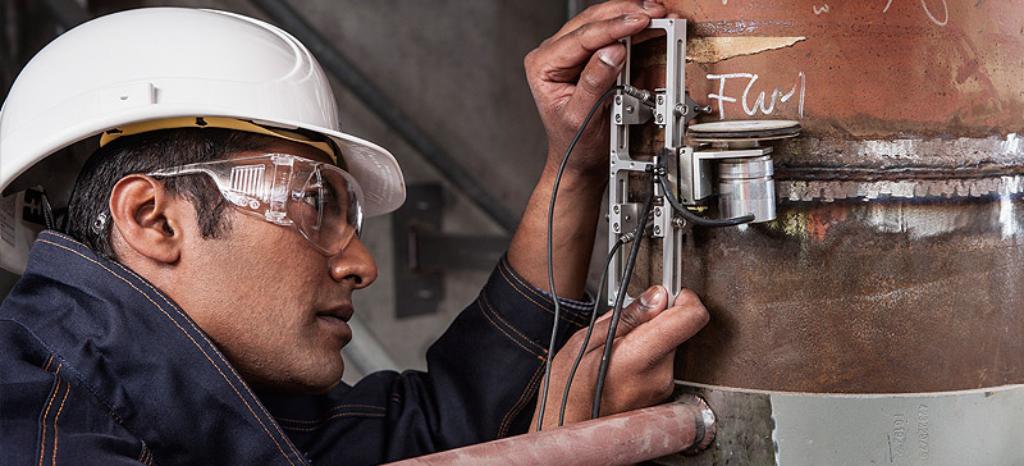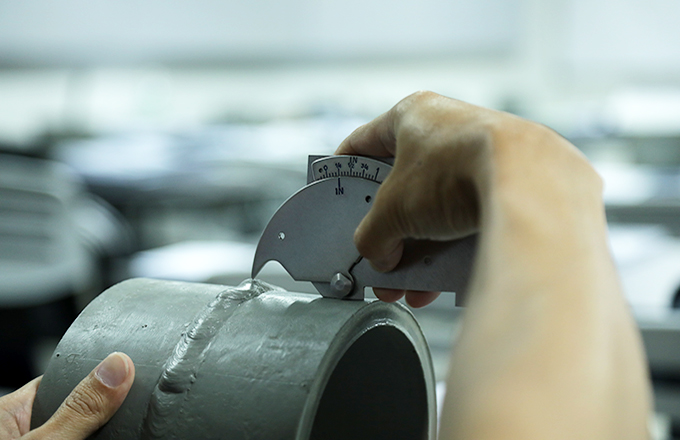Trustworthy Houston Welding Inspection for Conformity and Security Specifications
Checking Out the Fundamentals of Welding Examination: An In-depth Evaluation of Procedures, Tools, and the Relevance of High Quality Control in Welding Industries
Welding inspection serves as a foundation in the upkeep of safety and security and architectural honesty throughout numerous industries. Understanding the ramifications of these methods raises vital inquiries about their effectiveness and the future direction of quality assurance in welding.
Importance of Welding Evaluation
Welding evaluation plays a vital duty in making certain the honesty and safety and security of bonded frameworks. It works as a methodical method to assessing weld quality, identifying potential defects, and ensuring compliance with established criteria and requirements. The relevance of welding examination prolongs beyond mere adherence to regulations; it is pivotal in guarding human lives and shielding financial investments in facilities.
Defective welds can cause disastrous failures, leading to considerable economic losses, injury, or death. Strenuous assessment processes are necessary to spot issues such as insufficient penetration, porosity, or splits prior to they escalate right into important failures. In addition, efficient welding inspection adds to the overall efficiency and longevity of frameworks, guaranteeing that they can hold up against the conditions for which they were made.
Additionally, the implementation of welding assessment fosters a society of quality and responsibility within the welding sector. By prioritizing examination, organizations show their commitment to excellence, therefore improving their online reputation and competitiveness in the market. Inevitably, welding evaluation is not just a procedural step however a fundamental component of design integrity and security assurance, important for the effective implementation of welding tasks throughout different fields.
Trick Assessment Processes
A detailed method to welding inspection entails several vital processes that are essential for guaranteeing weld high quality and architectural integrity. The very first critical process is aesthetic examination, which allows examiners to determine surface area defects such as fractures, porosity, and improper bead appearance. This technique functions as an initial evaluation to guarantee that the weld satisfies specified criteria.

In addition, devastating screening may be carried out on example welds to examine their mechanical properties and performance under stress. This process involves effect, tensile, and tiredness testing to validate that the weld can endure operational conditions.
Lastly, documents and coverage are critical parts of the examination procedure. Preserving accurate documents of assessments, observations, and examination results assists ensure conformity with market criteria and assists in regular enhancement in welding practices. Jointly, these vital processes form the foundation of reliable welding assessment and quality control.
Tools for Weld Analysis
Many tools are essential for reliable weld examination, each developed to assess various elements of weld quality and efficiency. Among the most commonly used are aesthetic assessment tools, consisting of magnifying glasses and borescopes, which allow inspectors to recognize surface issues such as fractures, porosity, and improper combination.
Additionally, ultrasonic testing (UT) equipment is essential for detecting inner problems. This device utilizes high-frequency sound waves to expose suspensions within the weld, making certain the integrity of the product. Radiographic testing (RT) devices, which utilize X-rays or gamma rays, in a similar way offer understanding into the interior framework of welds, enabling the recognition of voids or incorporations.
For specific dimensions, calipers and gauges play a significant function in establishing weld dimensions and making sure adherence to defined tolerances. Firmness testers review the mechanical homes of the weld, guaranteeing it meets efficiency requirements.

Methods for Analyzing Quality
How can the quality of welds be reliably examined? A range of methods are employed to assess weld stability and guarantee adherence to specified requirements. Visual assessment is one Bonuses of the most essential technique, enabling examiners to determine surface area flaws such as fractures, porosity, or undercutting. This non-destructive method works as a preliminary evaluation before more advanced methods are made use of.
Ultrasonic screening (UT) is one more popular technique that uses high-frequency acoustic waves to identify interior problems within the weld. Houston Welding Inspection. This method provides a thorough sight of the weld's stability without compromising its structural honesty. On top of that, radiographic testing (RT) uses X-rays or gamma rays to disclose interior defects, supplying in-depth insights right into weld top quality
Magnetic bit screening (MT) is effective for finding surface area and near-surface interruptions in ferromagnetic materials, making use of magnetic areas and colored fragments to highlight problems. Color penetrant testing (PT) can be employed to discover surface-breaking problems by using a color that seeps into fractures and is consequently exposed.
Conformity With Market Requirements
Compliance with sector requirements is crucial for making certain the quality and safety of welded structures. These requirements, established by organizations such as the American Welding Culture (AWS) and the American National Criteria Institute (ANSI), supply guidelines that govern the welding process, materials, and inspection methods. Sticking to these criteria see this not just guarantees the architectural integrity of welds however likewise alleviates dangers related to failures that could cause tragic consequences.

Welding examiners are charged with validating compliance with these standards throughout the welding process (Houston Welding Inspection). This involves analyzing welding treatments, keeping an eye on welder certifications, and conducting comprehensive examinations of the end product. Non-compliance can result in considerable monetary effects, project delays, and damage to a business's reputation
Moreover, compliance fosters a society of quality assurance within the organization. By developing clear expectations and standards, firms can keep uniformity in their result and boost total performance. Routine training and updates on standards are vital to keep personnel informed and experienced, guaranteeing that all aspects of welding operations meet or exceed governing needs. Ultimately, dedication to market requirements acts as a foundation for quality in the welding sector, advertising security and dependability in bonded structures.

Verdict
Finally, welding assessment acts as a crucial part in preserving the security and integrity of bonded structures. Via the execution of essential inspection procedures and the usage of advanced devices and techniques, possible flaws can be identified and addressed effectively. Adherence to sector requirements guarantees compliance and promotes a culture of quality within the welding sector. Inevitably, extensive evaluation practices not just safeguard human lives but additionally boost the toughness and performance of welded buildings.
In addition, the implementation of welding inspection cultivates a culture of top quality and accountability within the welding market. Inevitably, welding inspection is not simply a step-by-step action but an essential component of design integrity and security guarantee, vital for the successful execution of welding tasks throughout various industries.
A detailed method to welding inspection includes numerous vital processes that are important for making sure weld quality and structural stability. These criteria, developed by organizations such as the American Welding Culture (AWS) and the American National Criteria Institute more information (ANSI), provide standards that control the welding process, materials, and inspection protocols.Welding inspectors are tasked with confirming compliance with these criteria throughout the welding procedure.